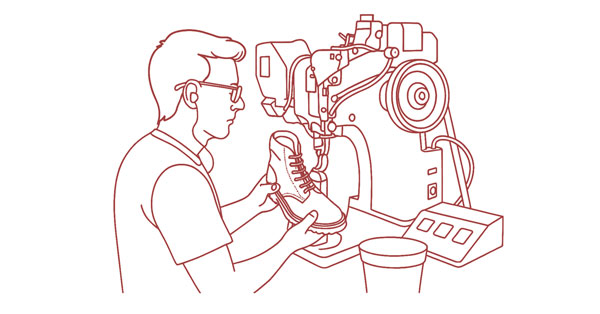The Intricacies of Shoe Construction: Evaluation of Methods and Durability
As consumers become more discerning, understanding the construction of footwear becomes paramount, especially after transitioning from inexpensive, disposable shoes. While some footwear may appear presentable at purchase, they often deteriorate significantly within months. The pivotal question that arises is: what differentiates shoes that withstand the test of time from those that wear out prematurely? Often, the answer lies in the method of sole attachment to the upper part of the shoe. This connection is crucial for the shoe’s longevity, sometimes more than the quality of materials or branding.
Notably, each shoe construction technique offers distinct advantages and disadvantages. The suitability of these methods depends on the intended use of the shoe, whether for style, comfort, or durability. Below, we delve into the various construction techniques and their implications for quality.
Understanding the Anatomy of Shoes
The Upper
The upper is the primary material that covers the foot, typically crafted from leather or canvas. It comprises elements such as the vamp, heel, and eyelets.
The Insole
This is the internal component where the foot rests, which may feature cushioning or contouring for enhanced comfort.
The Outsole
The outsole refers to the bottom portion of the shoe that makes contact with the ground. Material choices for outsoles range from rubber to leather or synthetic blends.
The Welt
A critical component for durability, the welt serves as a strip connecting the upper to the outsole, particularly found in higher-quality shoes.
The Last
The last is a three-dimensional model representing the foot’s shape, guiding how the shoe fits and appears. Different shoe lines within a brand may utilize distinct lasts that contribute to variations in fit.
Key Shoe Construction Methods
The numerous shoe construction methods can significantly impact functionality and longevity. Here’s a detailed examination:
1. Cold Cement Construction
Introduced: Mid-20th century, gaining traction after World War II.
Utilizing advanced synthetic adhesives, cold cement construction bonds the upper or midsole to the outsole without the application of heat. This approach is prevalent in athletic and casual sneakers, allowing the use of light materials and intricate sole designs. However, once worn out, these shoes typically cannot be resoled.
2. Strobel Construction
Origin: Developed in the mid-1900s and named after the Strobel Machine Co. in Germany.
This technique involves stitching a fabric insole board directly to the upper, creating a flexible foundation. It is commonly used in performance footwear where flexibility and breathability are essential, though it lacks resoling potential.
3. Blake Construction
Established: 1856.
Characterized by a streamlined design, Blake construction stitches the upper directly to the outsole, enabling resoling. However, it offers less water resistance compared to other methods due to the absence of a protective welt.
4. Vulcanized Construction
Origin: Developed in the mid-1800s through Charles Goodyear’s vulcanization process.
This method fuses uncured rubber with the upper via heat, resulting in durable footwear ideal for casual applications. However, its limited material options and resoling difficulties can be drawbacks.
5. Goodyear Welt Construction
Patented: In 1869 by Charles Goodyear Jr.
Renowned for its durability, Goodyear welt construction employs a welt to attach the upper to the outsole, allowing for repeated resoling. While more costly and heavier, this method is favored for high-quality dress shoes and boots.
6. Stitchdown Construction
Traditional Craft: Strongly rooted in American workwear styles.
This technique involves stitching the upper directly to the midsole, offering significant durability. However, resoling can be problematic, necessitating skilled cobblers or returns to the manufacturer.
7. Norwegian (Storm Welt) Construction
Origin: Derived from traditional European bootmaking.
Norwegian construction features a distinctive double stitch, providing extreme durability and water resistance, although it often results in a bulkier shoe profile.
Conclusion
Understanding shoe construction methods empowers consumers to make informed purchasing decisions. By recognizing the strengths and limitations of various construction techniques, shoppers can select footwear that not only meets their style preferences but also delivers on durability and performance.
